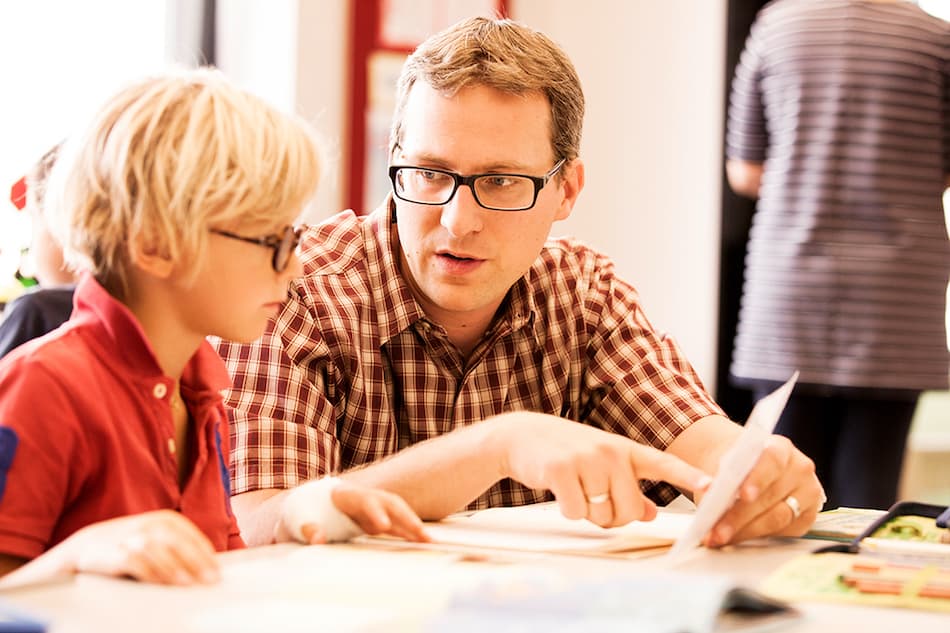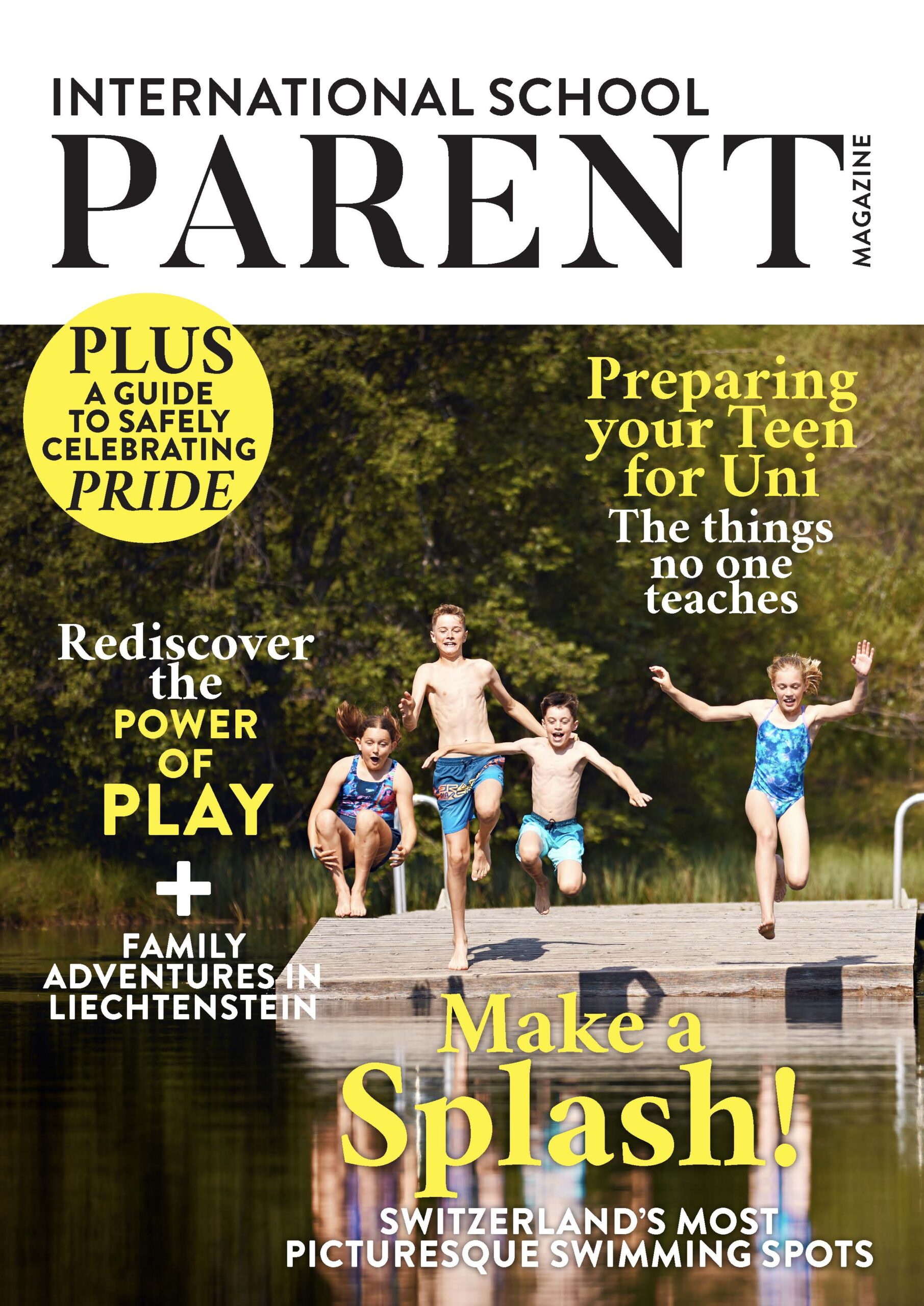Does a bilingual education spell success?

By the time she was 12 Natacha Roumiantzoff already spoke 3 languages fluently. Her mother spoke to her in Dutch, while her father talked in French. English was the secret language they spoke only to each other, so that Natacha and her younger sister wouldn’t be able to understand. This tactic, Natacha explained, had the opposite effect. As soon as she started primary school, learning English became her top priority – the perfect way to tap into her parents’ code-speak. “I was super excited to learn new languages, it definitely developed my curiosity,” said Roumiantzoff, now 28 and working for the United Nations. Spanish and Italian quickly followed when she moved to an International School in Switzerland for her secondary education. “Suddenly I had friends from Spain and I needed to understand what they were saying,” she laughed. “You can’t fully understand the culture unless you understand the language.” Natacha Roumiantzoff, now 28, works for the United Nations The benefits of speaking multiple languages have been well documented, both in early and later life. In the age of globalization and an ever more competitive jobs market, a bilingual education can open many new doors for children and young adults. Social, psychological and even health benefits have been linked to extra language learning, but it’s a hefty commitment for schools and parents to take on, requiring plenty of forward planning and time investment.
Speaking more than one language fluently is the reality for an estimated 50 percent of the global population. Countries such as Indonesia and India are home to hundreds of native languages and dialects, while the European Union officially includes 24. “I think one of the myths is that a bilingual education only works for clever or linguistically able children,” said Dr Gabriela Meier, founder of the Bilingual Immersion Education Network (BIEN) and Lecturer in Language Education at Exeter University. “It’s suitable for everyone.” The most common types of bilingual education programs involve learning the main school subjects in multiple languages, usually a different language on alternate days or with different teachers. This means that from the outset, lessons need to be more task based and tangible, involving multiple visuals, acting and extra multimedia to explain ideas. Dr Meier points out that this kind of supported learning can actually benefit students who may be less academically inclined. Often it is also boys, she says, who respond particularly well to this type of active teaching.
Research carried out recently in the UK showed that bilingual children are less easily distracted in noisy primary school classes. Dr Meier adds that a multilingual education format also fosters greater social cohesion; pupils are made aware of the needs of others and are required to help each other more often. “It has more than just linguistic benefits,” explains Meier, who speaks French, Spanish, English and German fluently. “In a bilingual class, not knowing becomes normalized. It is acceptable that you need help and that you can help others too. If it is a well taught lesson then the content learning doesn’t suffer.”
But with different languages come multiple exam systems, which can cause challenges for children switching between curriculums while still getting used to a new structure. The Swiss International School started in 1999 with 3 students and has now expanded to 16 locations and 3,300 students worldwide. Subject lessons are taught in English and the local language on alternate days for pupils ranging from kindergarten to the end of primary. At college level the language of instruction varies from lesson to lesson, keeping a balance between the two. “It’s all geared towards fulfilling the local requirements, because our students need to know about their environments. At the same time they get the global approach to their academic subjects,” said Tom Huber, Division Manager of the Swiss International School. To avoid confusion, the school prints identical, national standard, text books in both languages. Teachers then plan lessons and asses jointly. “Since we always have a local teacher and an international teacher working together, they can use the best of both backgrounds,” Huber explained. “Usually after 18 months the children function very well in their other language.”
While studies have shown that multilingual students excel at planning and solving complex problems, some parents express concern that their children seem to fall behind their monolingual peers in the early stages of linguistic development. When Clarissa Vorfelt moved to Switzerland with her Dutch husband Egon, they decided to put their two children through French school up to the age of 11, while speaking English and Dutch with them at home. “It takes quite a tough parent to hang on in those early years,” remembered Vorfelt. “It can definitely seem a bit worrying at the start if their reading and writing is slower than everyone else’s,” she said. “For parents it’s hard to watch your child not scoring as high in a test or finding it as easy as others.” But exposing her children to multiple languages from a young age has definitely given them extra confidence and an important long term asset, Vorfelt concluded. Her eldest daughter Cecilia started college at Johns Hopkins University in the US this year, while her 16 year old son Joe is now studying at Aiglon College in Switzerland.
Many multi linguals say that speaking a number of languages allows them to articulate their thoughts in range different ways and provides a broader perspective on complicated issues. Psycholinguistics Professor of Lancaster University, Panos Athanasopoulos, has spent most of his career researching bilingual cognition. His recent studies have shown that being bilingual does, in fact, statistically alter the way you think. People judging risk in their second language tended to make ‘more rational, economic decisions.’ Those decisions made in their first language, by contrast, were more likely to be affected by ‘deep-seated, misleading affective biases,’ which then unduly influenced their perception. Additionally, some scientists theorize that the increased blood and oxygen levels required by the brain when switching between two languages staves of dementia. The density of “gray matter” in the areas of the brain that control communication was shown to be higher in multilingual speakers.
The four pillars of a new language – reading, listening, writing and speaking – each require a focused approach to ensure that one language does not become too dominant over another, but it’s also important to keep sight of a few key principles when bringing up your child as a multilingual.
- STRUCTURED IMMERSION One of the most important foundations of a bilingual education is consistency. That means creating clear boundaries between languages to prevent confusion. When starting out, it’s important for children to form associations for each of their different languages and link their choice of words to a specific person or scenario. Experts suggest always speaking to your child in your mother tongue at home or adopting a “one parent, one language” approach.
- USE LANGUAGE IN WORK AND IN PLAY The boom in digital teaching resources and online materials has never been bigger, giving parents and teachers an easy, accessible way to make language learning part of a child’s daily routine. Foreign films and cartoons, as well as YouTube channels, podcasts and interactive games can all be helpful tools to integrate, both for leisure and educational purposes.
- KEEP YOUR CHILD MOTIVATED Setting personal goals can help both parents and students track learning progress. Making mistakes is a necessary part of developing a new skill. The latest research has shown that jumping back and forth between two languages also provides a physical mental workout that can stave off dementia and Alzheimer’s disease in later life.
- DO YOUR SCHOOL RESEARCH Having a long term plan for your child’s language education requires doing your own homework, and leaving some room for flexibility.
If you are uncertain about where job or life commitments will take you or your spouse, it’s worth picking an International School that has global locations but a consistent curriculum or exam system throughout. On the other hand, if you want to integrate your child into a national program at a later date, make sure the bilingual school you choose works alongside those future requirements.
- THE IMPORTANCE OF DIVERSITY Providing children with a more extensive grammatical tool kit has been shown to increase world view and benefit cognitive function. Psycho linguistic researcher Susan Ervin-Tripp established in 1960s that bilinguals develop different mindsets for each language, deciding which to use in response to any given situation. Helping your child nurture these different mindsets through exposure to a range of people, activities and arts helps to forge a positive sense of identity from an early age.
- LINK LANGUAGE WITH CULTURE Studies have shown that the most effective way to retain new information is by engaging all the senses when learning. Getting familiar with a new language requires a lot more than just learning vocabulary and grammar. Immersing students in a country’s culture helps create a deeper understanding of the language. Some of the most successful language learning methods aim to engage students with food, music, history and art.
- HAVE PATIENCE Though a bilingual child’s vocabulary may start off being smaller than a monolingual’s, it will be at least the same (if not bigger) across the two languages. Children don’t learn languages overnight. Practicing, experimenting and making mistakes are all part of the process and will pay off in the the long term.
By Amelia Martyn-Hemphill
More from International School Parent
Find more articles like this here: www.internationalschoolparent.com/articles/
Want to write for us? If so, you can submit an article here: www.internationalschoolparent.submittable.com
